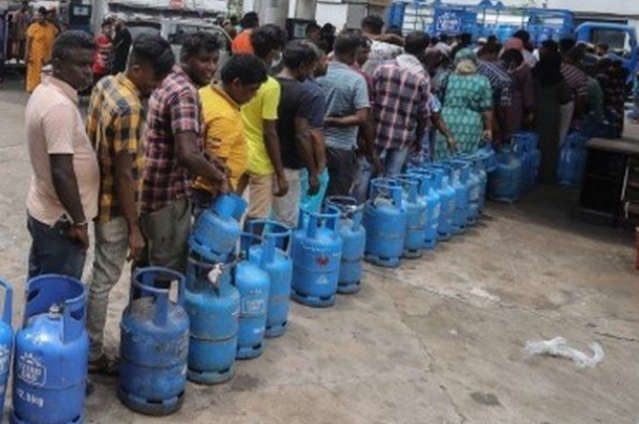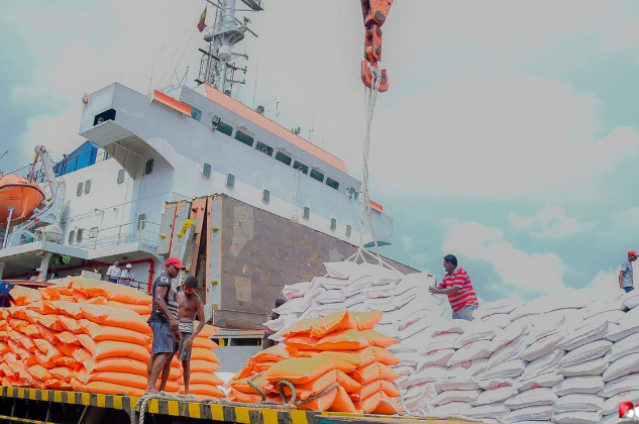A quick glance at any local, national or international newspaper ought to bring to your notice a whole section dedicated to the current economic crisis being faced by Sri Lanka. The available quantities of essential items have dropped, their prices have skyrocketed and inflation is very high. On top of this the citizens are standing in long queues for fuel and facing debilitating 13 hour power-cuts each day due to the country’s rapidly depleting coal reserves. Last Thursday thousands of people took to the streets to protest against the government’s monetary policies, which led to large-scale violence and property destruction. A treacherous path to economic revival lies ahead of Sri Lanka.

Anti-government protests in Sri Lanka
Source: JAPAN Forward
The economic misery has led to widespread anger and frustration among the common people. People are thronging the streets in large numbers to protest against the government’s policies, raising slogans like “Go Gota Go” and clashing with the law enforcement officials almost on a daily basis. As reported by the news agency Reuters, the ruling coalition has lost the majority in the Parliament. 26 ministers from Prime Minister Mahinda Rajapaksa’s cabinet resigned amid violent protests and the President called upon all the opposition parties to form a “unity government”, but this offer was unanimously rejected by them. The President has so far refused to resign but has agreed to hand over the country’s governance to any party or coalition who can prove that they hold 113 seats in the parliament.

People standing in long queues for refilling gas cylinders
Source: BBC
Long before this much publicised economic meltdown, the common people guessed that somewhere, something was about to go horribly wrong. Vani Susai, who works as a schoolteacher in Batticaloa in Sri Lanka’s eastern province recalled the first signs of this forthcoming crisis in the last week of January. Here’s an excerpt from her recent interview – One Sunday morning she ran out of gas. On calling the agency she was informed that they would not be able to supply her gas cylinder anytime soon; it would take several days. So she went from shop to shop in search of a cylinder and eventually found one after a three hour ordeal. Two months later, the supply of cooking gas is down to once a week. People stand in long queues, which start forming as early as 4am, for hours on Sundays, to get their cylinders filled.
Road to self-destruction
For months experts and opposition leaders had vehemently called upon the Rajapaksa administration to seek help from the International Monetary Fund (IMF) but the government had resisted all such calls. In late February after Russia invaded Ukraine and crude oil prices soared to record highs all over the world, the Sri Lankan government finally agreed to chalk out a plan to approach the IMF in April. But before heading to the IMF, Sri Lanka steeply devalued its currency which further led to a rise in inflation and added to the hardships of the masses.
Debt mismanagement by successive governments have created and sustained a twin deficit – a budget shortfall together with a current account deficit. In simpler terms, a budgetary deficit occurs when the government’s expenditure is over and above its revenue. Meanwhile a current account deficit implies that a country’s value of imports exceeds the value of its exports. Experts are of the opinion that this twin deficit is the root cause of the current economic crisis. Moreover, to win over the people, the Rajapaksa government promised deep tax cuts in a 2019 election campaign. These were implemented just before the Covid-19 pandemic which led to large-scale annihilation of the island nation’s economy.
Here’s a brief exploration of the reasons that led to Sri Lanka’s fall from grace.
1. The Pandemic Effect:
Tourism accounts for nearly 10% of Sri Lanka’s Gross Domestic Product (GDP). The covid-19 pandemic and the subsequent travel restrictions proved detrimental for the island nation’s economy which is heavily dependent on the revenue generated from tourism and foreign remittances. The number of visitors from three major countries – India, the UK and Russia rapidly declined.2. Banning Chemical Fertilizers:
Last year the Rajapaksa government took the catastrophic step of banning any kind of chemical fertilizer in order to push the country towards a more organic method of farming. This ill-timed announcement severely hit the country’s farm production, especially that of rice and sugar. The decision has now been reversed.3. Rapid Decline in FDI:
During the reign of incumbent president Gotabaya Rajapaksa, Sri Lanka’s foreign direct investment (FDI) has reduced. According to official government data, FDI stood at $1.6 billion in 2018. $793 million in 2019 and only $548 million in 2020.4. Paucity of Foreign Reserves:
The alleged economic and debt mismanagement of successive governments has had a disastrous impact on Sri Lanka’s foreign reserves. Over 70% of their foreign reserves have been depleted in the past few years, and now the country is left with only $2.31 billion worth of foreign currencies with debt repayment of over $4 billion. Adding fuel to this raging fire of economic crisis is the island nation’s high dependency on imports for essential items like sugar, pulses and cereals as they lack the adequate amount of foreign reserves to pay for such imports. This has led to a severe gulf between the demand and supply of food grains and their prices have shot up. President Rajapaksa has recently stated that Sri Lanka could face a trade deficit of $10 billion this fiscal.5. The Russia Ukraine War:
The ongoing Russia-Ukraine conflict has led to sharp increase in the prices of crude oil, sunflower oil and wheat. Crude oil prices rose to $125/barrel at the height of the war, which is a 14 year record high. New Delhi had to help by providing 40,000 MT of diesel under an agreed $500 million line of credit. India has so far supplied over 2, 00,000 MT of fuel over a two month period.
11,000 MT of rice from India reaches Sri Lanka
Source: The Hindu
In the intervening time, the Sri Lankan President has asked for assistance from India and China, especially with regards to fuel from the former. In February a $500 million credit line was signed with New Delhi. India has also signed a $1 billion credit line with the island nation for the import of essentials, like food items and medicines. Meanwhile the Rajapaksa government has also sought help to the tune of at least another billion dollars from New Delhi. A donation of more than 25 tons of medicines and medical equipment worth SLR 260 million were handed over by the Acting High Commissioner Vinod K Jacob to the Sri Lankan Health Minister in Colombo. The humanitarian consignment also contained kerosene to be used as fuel by the Sri Lankan fishermen and this would be distributed among the entitled beneficiaries in the coming days. Last week New Delhi had provided the island nation with urgent emergency supplies consisting of essentials like rice, milk powder and life-saving medicines valued at ₹ 45 crore. In spite of such commendable efforts by India, Sri Lanka will have to turn to its other allies and partners such as China, Japan and the IMF if they are to tide over their worst economic crisis since independence in 1948.
